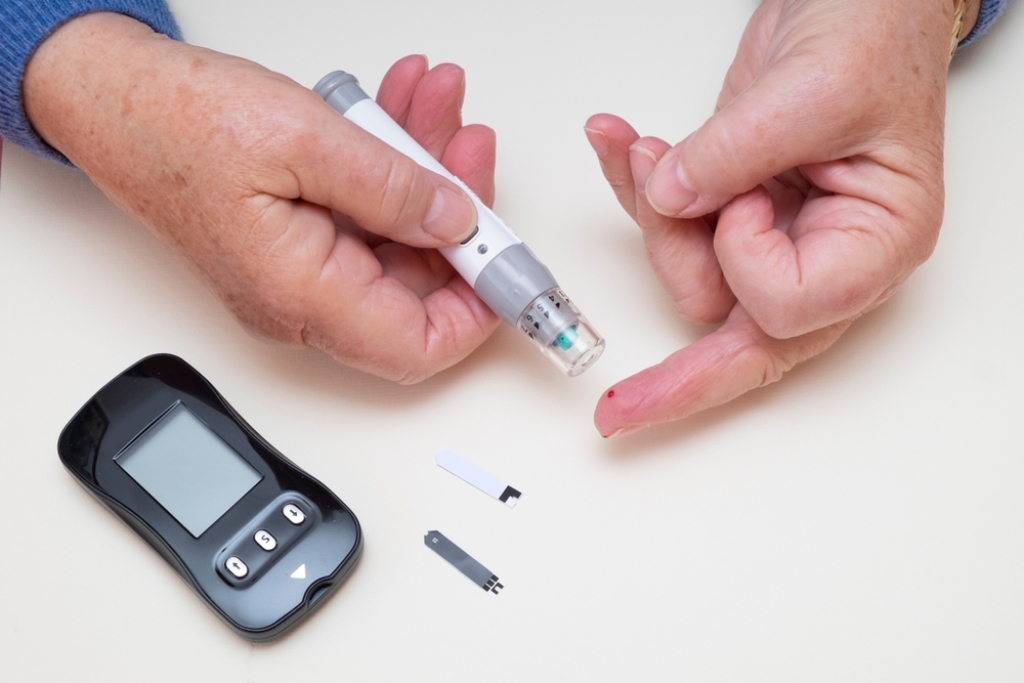Diabetes is known as the plague of the 21st century that has the treatment but no cure. People live with it but know little about its nature. Be the one, who isn’t afraid to look the enemy right in the face!
How to understand diabetes and oppose its destructive nature? Start with understanding its types first. Later it’ll be easier to deal with the condition and its consequences.

There are two types of diabetes. They both are characterized by high levels of sugar in the blood and the inability of the body to control the levels of sugar. Symptoms and complications may be slightly different, which explains why there are two different types of the same illness. Today over 10.000.000 people in Australia only suffer from the condition. Only 5% have the type 1, while 95% treat type. But does it mean that one is safer and another is not OR that your chances to get the first type are very low? Let’s find that out.
Diabetes and Pre-diabetes: What Are They?
Let’s start in the reverse sequence. Diabetes is the condition when the blood glucose (blood sugar) reaches high levels. This glucose is regarded as the main type of blood sugar and is definitely the core energy source for the body. It is mostly obtained from what you eat but is also made in muscles and liver. The blood is responsible for carrying glucose to all body cells.
The pancreas releases a hormone into the blood (insulin) that helps the blood carry glucose, but when the pancreas can’t make enough insulin or the hormone doesn’t work properly, glucose remains in blood without reaching the cells. Thus, its levels get higher and lead to diabetes.
What is pre-diabetes then? It’s the condition characterized by relatively higher levels of glucose in the blood. These levels are enough to cause diabetes. If a person chooses a healthy lifestyle, right dieting, and moderate physical activity, he can prevent the development of diabetes.
Diabetes Type 1 and Type 2: General Facts and Stats
- Diabetes Type 1
The condition is fully genetic and autoimmune. Type 1 cannot be caused by some environmental factors or foods. It mostly affects people in childhood, however, there are also known cases of its development in later years, too. The complete destruction of the cells of pancreas means that a sufferer needs an insulin replacement therapy, because the hormone is no longer produced. It doesn’t mean that some basic lifestyle changes and healthy eating are of no help, but still, they can’t help a patient to cure his body.
- Diabetes Type 2
Recent studies report that Type 2 has a pretty strong genetic predisposition. It means that if any of your relatives has/had it, your chances to get it are high.
For many people, however, Type 2 is a result of:
- Weight gain;
- Sedentary lifestyle;
- Unhealthy diet;
- Stress.
Though most people believe it occurs in people over 40 only, today the condition is often diagnosed in children or young adults, too:
- Around 1.7 billion people across the globe suffer from Type 2 diabetes;
- Every five minutes there’s someone diagnosed in Australia;
- 1 in 2 US citizens will have it by 2020.
These are the reasons why diabetes Type 2 is often referred as the world’s epidemic. Yet still, not all sufferers are prescribed insulin. Some people have some pancreas cells still working. When the failure is progressive, insulin injections are a must for blood sugar levels control.
Two years ago there was the study result published in one of the periodicals. The statistics it provided was shocking even to healthcare providers, not speaking of ordinary people:
- More than 1/3 of country’s population has high blood sugar levels, thus they have a pre-diabetes condition. And more than 90% of them don’t know they have the issue;
- Due to weight increase and a sedentary lifestyle 5% of people develop from pre-diabetics into diabetics;
- Around 4.000 youths are diagnosed with Type 1 diabetes every year;
- Nearly 8.000 youths are diagnosed with Type 2 diabetes every year;
- The risk of death for a diabetic is twice that of healthy people.
The condition also increases risks for loss of toes, feet and legs as well as the occurrence of such serious conditions as heart disease, blindness or kidney failure.
What Causes Different Diabetes Types?
Causes | Diabetes Type 1 | Diabetes Type 2 |
| General | Beta cells get attacked by the immune system. Regular and persistent attacks reduce production of insulin and elevate levels of glucose in blood. Thus, insulin is not produced or produced in insufficient amounts. | Regular consumption of dietary sugars in high amounts leads to insulin resistance. Receptor cells get less resistant to the hormone and can’t remove glucose from the blood. Thus, blood glucose levels get higher and demands on insulin are higher, too. |
| Genetics | It’s a rare cause. Type 1 diabetics inherit their risks factors from both parents. | Diabetes Type 2 has a stronger link to the medical history of one’s family than type 1. |
| Bodily effects | The condition may be caused by beta cells destruction. The attacks occur after viral infections like mumps or rubella cytomegalovirus. | The condition is linked to aging, dieting, sedentary lifestyle, obesity or genetics. |
| Climate | Cold weather may be a trigger. In some rare cases Type 1 develops in people, who live in cold climates all the time. | The condition is more common to those, who have low Vitamin D levels. Vitamin D supports the functioning of the immune system and affect insulin sensitivity. |
| Diet | When there’s a case of early diet, it also plays a part. The condition is less common in those, who never skip breakfast and choose healthy food. | Obesity is one of the key triggers. When eating and exercising habits are far from being healthy, diabetes Type 2 can occur. |
What Are the Symptoms?
When it comes to Type 1, person experiences increased thirst and urination as a result. He may suffer from constant hunger, a quite rapid weight loss, extreme tiredness and blurred vision.
The symptoms of Type 2 don’t appear all at once. They are gradual, which is why it’s hard to notice them. The commonest are unexpected weight loss and tiredness. A person feels sick more frequently than he used to. Levels of thirst and urination get higher. And when there’s any infection or illness, the healing process is really slow. The same refers to plain cuts.
Can any of the conditions be prevented or cured for good? Type 1 diabetes cannot be prevented. Lately, there have appeared many promising types off researches based on targeting the cells of the immune system, yet much time is needed to prove this way will work. What about Type 2 diabetes? In this case, prevention is the best and only cure. It’s recommended to lose weight, go in for sports and eat healthy foods. If you fail in preventing, having insulin injections is all that remains.
What Does Insulin Actually Do?
The main function of insulin is to guarantee that the blood glucose levels aren’t very high and that glucose is driven to cells. The hormone helps stimulate the glucose entry into muscles, brain, fat and all other cells that need survival as well as enough energy to keep working. Insulin stimulates the glycogen synthesis in the liver. Moreover, it inhibits the gluconeogenesis. All these functions help in lowering down the levels of glucose in blood every time it rises.
In addition to the above-mentioned functions, insulin inhibits the breakdown of the fat as the energy source. When the fat is eliminated, any diabetes complications are prevented.
Summing It Up: Common Differences and Similarities
| Type 1 Diabetes | Type 2 Diabetes |
| It is diagnosed in childhood | It is diagnosed in those over 30 years old |
| It is not associated with excess weight | It is associated with excess weight |
| It is associated with higher levels of ketone | It is associated with high blood pressure as well as high levels of cholesterol |
| It can’t be cured, but can be treated with insulin injections or insulin pump | On initial stages it can be treated without insulin or other medications |
| It cannot be controlled without insulin injections | It can be controlled with easy lifestyle changes to come off insulin |
As to similarities, most symptoms are alike. Besides, in both cases, a patient should keep very close tabs on the amounts of sugar in his blood. People with diabetes need to contribute lifestyle changes, lose weight, exercise more and choose healthy products and drinks. In addition, they need to see their treatment teams once every three months to control the process of the disease and contribute to its regress.



